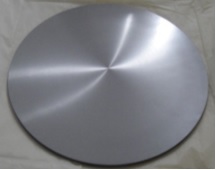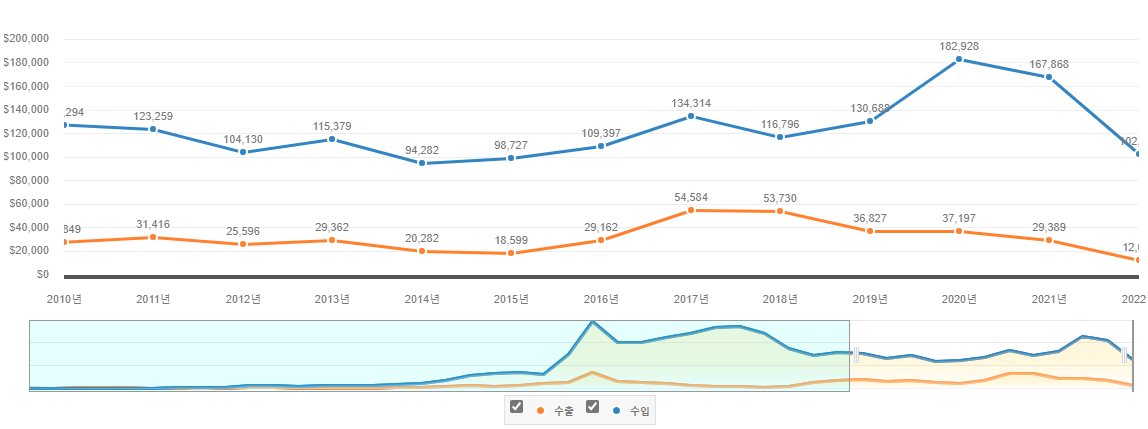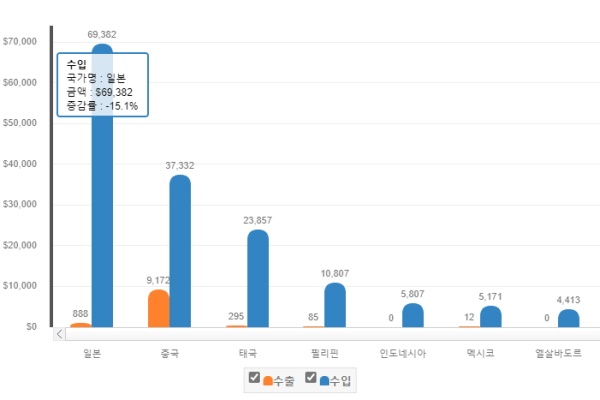최근 미국이 수입 제한 조치를 내린 탄탈륨(Ta, tantalum, 탄탈럼)이 국내에서 대부분 반도체 공정에 사용되며, 국내 반도체 소재 안정성을 위해서도 탄탈륨의 공급 안정성을 확보해야 한다는 목소리가 높아지고 있는 가운데, 공급 안정성을 위해서는 탄탈륨 스크랩의 재활용 기술이 관건 인 것으로 나타났다.
美, 북·중·러·이 탄탈륨 수입 금지
韓 반도체 90% 이상, 4천억 시장
스크랩 싸게 日 수출, 비싸게 수입
최근 미국이 수입 제한 조치를 내린 탄탈륨(Ta, tantalum, 탄탈럼)이 국내에서 대부분 반도체 공정에 사용되며, 국내 반도체 소재 안정성을 위해서도 탄탈륨의 공급 안정성을 확보해야 한다는 목소리가 높아지고 있다.
탄탈륨의 공급 안정성을 위해서는 싼값에 해외에 수출되고, 비싼 값에 다시 들여오는 탄탈륨 스크랩의 재활용 기술의 상용화가 핵심인 것으로 나타났다.
국내외 언론에 따르면 지난 25일 미국 국방부는 북한과 중국, 러시아, 이란 등 4개국으로부터 탄탈륨 금속과 합금의 수입을 금지하고, 연방 관보에 게재한 것으로 전해졌다.
미국 국방부는 국방수권법 규정에 따라 2020년 10월부터 이들 4개국에서 탄탈륨의 수입 금지 규정을 시행해 왔는데, 이번에 이 방침을 최종 확정한 것으로 알려졌다.
탄탈륨은 3,017℃의 고융점과 높은 전하량, 낮은 저항온도계수, 우수한 내부식성 등으로 전자산업에서 반도체 공정용 타겟, 자동차 산업에서 고용량 축전기 재료, 소형 콘덴서, 제트엔진 부품, 항공기 부품 등으로 사용된다.
국내에서는 90% 이상이 반도체 공정에 사용되는 것으로 알려져 있다.

▲반도체 공정에 사용되는 탄탈륨 스퍼터링타겟
반도체 공정에서 탄탈륨은 반도체 배리어 소재로 사용된다. CVD 공정에서 적용된다.
대부분은 고순도 스퍼터링타겟(Sputtering Targets)으로 공급되며, 일부 프리커서 형태로 공급되기도 한다.
국내에서 반도체 탄탈륨 시장은 정확한 금액은 나와 있지 않지만 업계는 약 3,000억원에서 3,500억원 시장으로 추정하고 있다.
국내 탄탈륨 수입 통계를 살펴보면 수입 중량은 변동폭이 크지 않으나 가격이 수입가격은 지속 상승하고 있다.

▲탄탈륨 수출입 추이(자료 : 무역협회)
한국 무역협회 수출입 통계에 따르면 2014년 1㎏당 357달러에 달하던 가격은 2015년 413달러, 2016년 518달러, 2017년 544달러, 2018년 569달러, 2019년 706달러, 2020년 867달러, 2021년 930달러까지 지속 상승했고, 2022년에는 861달러를 기록하고 있다.
수입 중량은 2020년 211톤을 기록했고, 2021년에는 180톤을 기록해 전년대비 14.5% 감소했다. 2022년에는 7월까지 118톤을 수입해 전년대비 11.1% 증가한 것으로 나타났다.
수입 총금액은 2021년에는 1억6,727만달러를 기록해 약 1,990억원(2021년 12월31일 환율 기준)을 기록한 것으로 나타났고, 2022년 7월 현재(2022년 7월29일 환율 기준) 1억210만달러를 기록해 약 1,331억원을 기록 중이다.
국내 1위 수입국은 일본이다. 2021년 일본에서는 약 6만9,382달러의 탄탈륨을 수입했는데, 2020년 대비 15.1% 줄어든 금액이긴 하지만 2위 중국에 비하면 2배에 달하는 수치다.

▲2021년 국가별 탄탈륨 수입동향(자료 : 무역협회)
이와 같이 일본 수입 비중이 높은 이유는 탄탈륨 재활용과 관계가 높다.
국내에서 소비되는 탄탈륨의 경우 대부분 수입에 의존하는데 수입량의 90% 이상이 반도체 공정에서 사용된다.
반도체 공정에서 사용되는 탄탈륨의 경우 기본적으로 5N급의 고순도 제품이기 때문에 사용하고 남은 스크랩도 거의 대부분 5N, 4N 급의 고순도로 알려져 있다. 이에 스크랩으로도 반도체 공정에 사용할 수 있는 고순도의 제품으로 다시 재활용이 가능한 것이다.
다만 이 스크랩들을 국내에서 재활용하지 못하는 문제가 있다.
탄탈륨의 경우 기본적으로 스크랩 가격도 비싼데다, 재활용 공정의 난이도가 높아 국내에서는 재활용을 전문으로 하는 기업이 없는 것으로 파악되고 있다.
탄탈륨을 재활용하는 방법에는 습식 공정과 건식 공정 2가지가 있다.
습식 공정은 불산/불화물 처리를 하는 방법이나 불화물 및 유기용매 사용에 따른 환경부하가 높고, 복잡한 공정으로 인해 운영비용이 높은 단점이 있다.
건식 공정은 진공아크용해나 전자빔 용해를 하는 방법으로 습식 공정을 거치지 않아 환경부하는 감소하나 설비비용이 큰 단점이다. 전자빔을 설치해 설비를 마련하는 경우 약 250억원 정도의 설비비가 필요한 것으로 알려져 있다.
국내에서는 환경 또는 경제성을 이유로 탄탈륨을 재활용하는 업체들이 없으며, 낮은 가격으로 스크랩이 일본으로 대부분 수출되고, 일본에서 재활용돼 다시 국내로 수입되는 것이다.
이에 탄탈륨 전문가들은 반도체 공정에 사용되는 필수 소재인 탄탈륨의 공급 안정성을 확보하고, 지난 불화수소 수입 중단 같은 글로벌 공급망 위기에 대비하기 위해서 국내에서 스크랩을 재활용하는 기술을 빨리 상용화해야 한다고 입을 모으고 있다.
한편 탄탈륨 재활용과 관련해 국내에서는 상용화 또는 사업화한 기업은 현재 없는 것으로 전해지고 있으며, 재활용 기술을 보유하고 있는 기업으로는 엠티아이지(MTIG)가 있는 것으로 알려지고 있다.
엠티아이지의 경우 수소화-탈수소화 공정을 통해 탄탈륨 분말 제조가 가능하고, 지난 2019년 이 기술을 통해 특허(제 10-2014845호) 등록을 한 바 있다.


